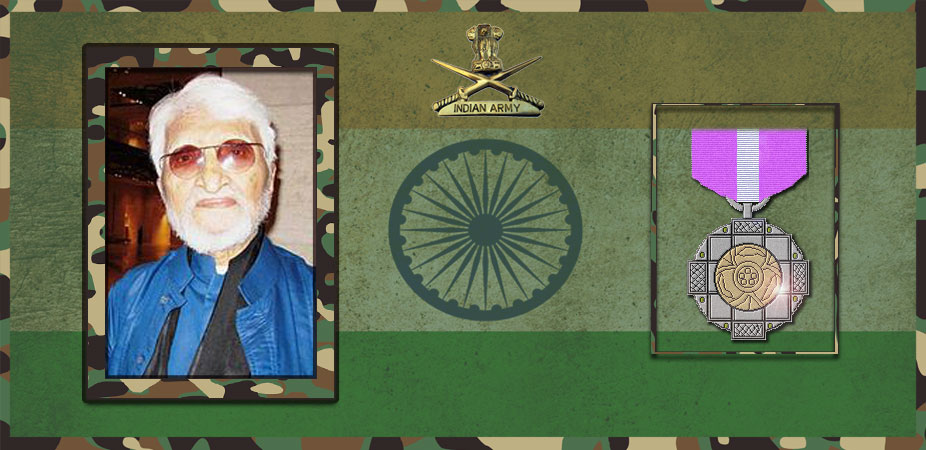Let's salute to our Indian Army together, We are proud to be Indian.
Let's salute to our Indian Army together, We are proud to be Indian.

Maqbool Fida Husain (17 September 1915 – 9 June 2011) was a modern Indian painter of international acclaim, and a founding member of Bombay Progressive Artists’ Group.
Husain was associated with Indian modernism in the 1940s. His early association with the Bombay Progressive Artists’ Group used modern technique, and was inspired by the “new” India after The Partition of 1947. His narrative paintings, executed in a modified Cubist style, can be caustic and funny as well as serious and sombre. His themes—sometimes treated in series—include topics as diverse as Mohandas K. Gandhi, Mother Teresa, the Ramayana, the Mahabharata, the British raj, and motifs of Indian urban and rural life. Early in his painting career, and until his death, he enjoyed depicting the lively and free spirit of horses in many of his works.Husain is the most celebrated and internationally recognized Indian artist of the 20th century. Husain is primarily known for his paintings, but is also known for his drawings and his work as a printmaker, photographer, and filmmaker. Some of his later works stirred controversy, as they depicted traditional deities of India in non-traditional ways including nude portrayals of the deities.
He also directed a few movies. In 1967, he received the National Film Award for Best Experimental Film for Through the Eyes of a Painter.In 2004, he directed Meenaxi: A Tale of Three Cities, a film he worked on with his artist son Owais Husain, which was screened in the Marché du Film section of the 2004 Cannes Film Festival.
Husain was born on 17 September 1915 in Pandharpur to a Sulaymani Bohra family who trace their roots back to Gujarat within the last 200 years, and then originally to Yemen. He picked up taste in art through studying calligraphy while he stayed at a Madraasa in Baroda. Husain attended the Sir Jamsetjee Jeejebhoy School of Art in Mumbai. Early in his career Husain painted cinema posters in Mumbai. To earn extra money, he worked for a toy company designing and building toys. He often travelled to Gujarat to paint landscapes when he could afford to.
Husain developed his painting skills in the 1930s, painting billboards for the growing Bollywood film industry.This was a clique of young artists who wished to break with the nationalist traditions established by the Bengal school of art and to encourage an Indian avant-garde, engaged at an international level. The artists cite “The Partition” of India and Pakistan 14 August 1947, with its resulting religious rioting and heavy loss of life as their reason for forming The Progressive Artist’s Group in Bombay in December 1947. The artists saw the Partition as a “turning point” for India, and their new style of art was urged on by, and was also a turning point for, (modern) Indian Art.Husain’s first solo exhibit was in 1952 in Zurich. His first U.S.A. exhibit was at India House in New York in 1964. In 1966, he was awarded the prestigious Padma Shri .
His paintings allegedly hurt the religious sentiments of Hindu nationalist groups, which beginning in the 1990s mounted a campaign of protest against him. The paintings in question were created in 1970, but did not become an issue until 1996, when they were printed in Vichar Mimansa, a Hindi monthly magazine, which published them in an article headlined “M.F. Husain: A Painter or Butcher”.In response, eight criminal complaints were filed against him. In 2004, Delhi High Court dismissed these complaints of “promoting enmity between different groups … by painting Hindu goddesses – Durga and Sarswati, that was later compromised by Hindu fundamentalist groups.”In 1998 Husain’s house was attacked by Hindu fundamentalist groups like Bajrang Dal and art works were vandalised. The leadership of another fundamentalist political party Shiv Sena endorsed the attack. Twenty-six Bajrang Dal activists were arrested by the police. Protests against Husain also led to the closure of an exhibition in England.
He has also produced & directed several movies, including Gaja Gamini (2000) (with his muse Madhuri Dixit who was the subject of a series of his paintings which he signed Fida). The film was intended as a tribute to Ms. Dixit herself.In this film she can be seen portraying various forms and manifestations of womanhood including the muse of Kalidasa, the Mona Lisa, a rebel, and musical euphoria. He also appeared in a scene in film Mohabbat, which had Madhuri Dixit in lead role. In the film, the paintings that were supposedly done by Madhuri were actually Husain’s.
He went on to make Meenaxi: A Tale of Three Cities(with Tabu). The film was pulled out of cinemas a day after some Muslim organisations raised objections to one of the songs in it. The All-India Ulema Council complained that the Qawwali song Noor-un-Ala-Noor was blasphemous. It argued that the song contained words directly taken from the Quran. The council was supported by Muslim organisations like the Milli Council, All-India Muslim Council, Raza Academy, Jamiat-ul-Ulema-e-Hind and Jamat-e-Islami. Husain’s son stated that the words were a phrase referring to divine beauty that were being sung by the central character played by Tabu. He said there was no intention to offend. Following the wave of protests the enraged artist withdrew his movie from cinemas. The film was well received by the critics, however, and went on to win various awards.